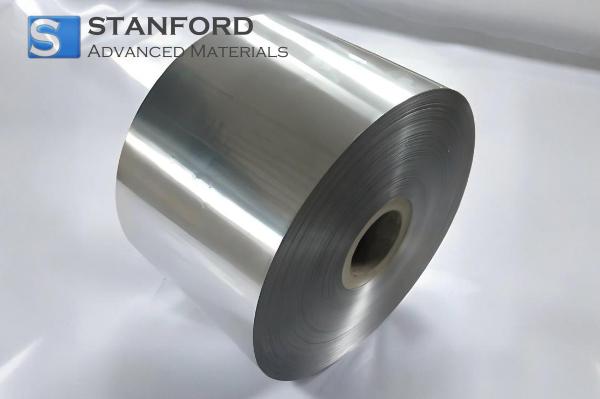Holmium: Element Properties And Uses
Description
Holmium is a rare-earth metal, atomic number 67, which possesses unique chemical and physical properties with implications in advanced lasers, magnets, and nuclear technologies.
Introduction to the Element
Holmium is a fascinating element in the periodic table belonging to the lanthanide series. It was discovered in 1879 by a Swedish chemist named Per Teodor Cleve, and since then, holmium has been considered an unusual element with substantial contributions to modern technology.
In scientific research, holmium has generated great interest due to its magnetic and spectral properties, directly related to the electrons in its orbitals 4f. These properties have led to its adoption in high-tech devices and specialised industrial applications.
History and Discovery
Holmium was first isolated by Per Teodor Cleve in 1879, who derived it from the mineral erbia, a rare-earth ore. Cleve's work followed earlier research into the rare-earth elements, which were known to be difficult to separate due to their chemical similarities. Holmium was named after the Latin word Holmia, meaning "Stockholm," in honour of Cleve's hometown.
The specific uses of holmium were not recognised in the early years after its discovery. However, over time, some unique magnetic properties and electron behaviour were realised as being suitable for new materials and technology development. Its use in laser technology, for example, during the 20th century, was perhaps a turning point in its applications. Currently, this element plays an important role in several high-tech industries: medicine, nuclear power, and electrical engineering.
Chemical Properties Description
The chemical properties of holmium are dominated by its stable trivalent state, that is, it predominantly forms compounds in the +3 oxidation state. The electron configuration of the element, [Xe] 4f^11 6s^2, underpins many of its chemical behaviours. Holmium has relatively low reactivity with water, but it reacts more readily with acids to produce salts of holmium. This is typical of many rare-earth metals in which the electrons on the 4f orbitals are shielded from the outside environment by the outer shell electrons.
Extensive work has been done on various holmium compounds, including oxides, halides, and nitrates, because of their incomparable spectral and magnetic properties. The applications cover a wide range of areas in the industries: as catalysts and in high-temperature reactions. The stability of the +3 oxidation state that characterises holmium means that the metal ion does not undergo rapid changes during such processes, a desirable feature in industrial chemical processes. This stability adds to its efficiency as a component in materials to attain long-term durability.
Physical Properties Data Table
|
Property |
Value |
Unit |
Description |
|
Atomic Number |
67 |
- |
Number of protons in the nucleus |
|
Atomic Weight |
164.93033 |
g/mol |
Average mass of holmium atoms |
|
Density |
8.8 |
g/cm³ |
Mass per unit volume of the metal |
|
1474 |
°C |
Temperature at which holmium transitions to liquid form |
|
|
Boiling Point |
2700 |
°C |
Temperature at which holmium transitions to gas form |
|
Electron Configuration |
[Xe] 4f^11 6s^2 |
- |
Arrangement of electrons in the atom |
|
Crystal Structure |
Hexagonal Close-Packed |
- |
The ordered atomic arrangement in the solid |
For more information, please visit Stanford Advanced Materials (SAM).
Common Uses
Holmium is applied in several advanced fields due to its distinctive physical and chemical properties. The most important applications include:
- Medical Lasers: Application of holmium lasers is very common in medical fields, particularly in procedures such as lithotripsy and other surgery-related interventions. These lasers offer precision cutting with negligible thermal damage to surrounding tissues.
- Magnetic Materials: Due to its outstanding magnetic characteristics, holmium is included in the manufacturing of high-performance magnets. Such magnets are fundamental components of contemporary electronic devices and memory systems.
- Nuclear Technology: Holmium is a good neutron absorber; thus, it finds many applications in nuclear reactor control rods and other safety systems of nuclear reactors.
- Special optical filters and imaging devices utilise unique spectral characteristics for the development of the element, contributing significantly to improvements in its performance in optical applications.
Preparation Methods
Holmium is produced from rare earth ores, such as monazite and bastnasite, by ore processing, chemical separation (solvent extraction, ion exchange), reduction (metallothermic), and purification. These steps yield high-purity holmium for industrial and scientific applications.
Frequently Asked Questions
What is holmium and where does it come from?
Holmium is a rare-earth element extracted primarily from the minerals monazite and bastnasite, and it has wide applications in high-tech industrial applications.
How does one prepare holmium industrially?
It is produced through the crushing of rare earth ores, followed by chemical separation of holmium and metallothermic reduction of the compound to pure metal.
What is unique about the chemical properties of holmium?
Holmium usually presents an oxidation state of +3, with a particular electronic configuration that confers stability to its compounds, useful in several chemical reactions and industrial processes.
What are some common applications of holmium?
Its applications range from medical lasers that perform precision surgery to high-performance magnets in electronic devices and nuclear control materials in reactor safety systems.
Which industries have the greatest use for holmium?
The element finds wide applications for its unique magnetic and spectral properties in many modern industries: electronics, healthcare, nuclear power, and materials manufacturing.

 Bars
Bars
 Beads & Spheres
Beads & Spheres
 Bolts & Nuts
Bolts & Nuts
 Crucibles
Crucibles
 Discs
Discs
 Fibers & Fabrics
Fibers & Fabrics
 Films
Films
 Flake
Flake
 Foams
Foams
 Foil
Foil
 Granules
Granules
 Honeycombs
Honeycombs
 Ink
Ink
 Laminate
Laminate
 Lumps
Lumps
 Meshes
Meshes
 Metallised Film
Metallised Film
 Plate
Plate
 Powders
Powders
 Rod
Rod
 Sheets
Sheets
 Single Crystals
Single Crystals
 Sputtering Target
Sputtering Target
 Tubes
Tubes
 Washer
Washer
 Wires
Wires
 Converters & Calculators
Converters & Calculators
 Write for Us
Write for Us




 Chin Trento
Chin Trento



